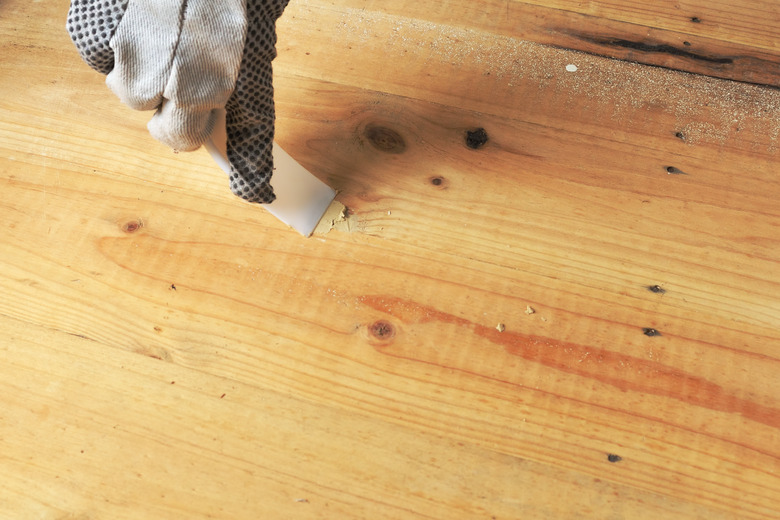How To Use Plastic Wood
We may receive a commission on purchases made from links.
DAP brand Plastic Wood is a solvent-based wood filler that has been on the market for many years and has earned a reputation as a reliable if somewhat quirky wood-repair product. It's strong but not as strong as epoxy wood filler, and it's easy to handle but not as easy as water-based products. It's a wood filler as opposed to a putty, which makes it suitable for filling large holes as well as small ones.
Difference Between Wood Putty and Wood Filler
Difference Between Wood Putty and Wood Filler
A wood filler consists of sawdust or wood fibers suspended in a binder, whereas a putty is basically a synthetic plastic that may or may not cure and harden. Judging by its name, Plastic Wood could be either, but it has more characteristics in common with a filler than with a putty.
Just like wood, Plastic Wood's main component is cellulose, but it also contains limestone and attapulgite, and these are all suspended in a substrate of acetone and isopropyl alcohol. The solvents evaporate quickly, and when they do, the filling material hardens. Plastic Wood actually behaves somewhat like drywall joint compound, which isn't surprising because two of its ingredients, limestone and attapulgite, are also found in joint compound.
How to Fill a Hole With Plastic Wood
How to Fill a Hole With Plastic Wood
- Clean the area thoroughly to remove all dust, then wipe with a solvent to remove grease and oil.
- Apply masking tape or painter's tape around the edges of the hole, if the hole is large. This helps to keep putty from the surrounding surfaces.
- If you're using the product from a can, stir the contents thoroughly before removing any.
- Apply the product with a putty knife, overfilling the hole slightly so you can sand it flat. Overfilling isn't important if you're making small repairs such as nail holes or small cracks.
- Let the filler dry as directed. The drying time is two to six hours for small holes and up to 36 hours for deeper ones.
- Sand the filler flush to the surface before you remove the tape.
Tip
Shrinkage is minimal, but when making large repairs, you may find it necessary to apply a little more filler after the initial application has dried.
Is Plastic Wood Good for Stained Wood?
Is Plastic Wood Good for Stained Wood?
The main ingredient in Plastic Wood, cellulose, accepts stain, but the other two ingredients don't, so on the whole, Plastic Wood does not stain well. It comes in a variety of wood tones, though, so if you're using it to fill wood that you plan to stain, the manufacturer recommends staining first and then using a color that matches the stained wood.
The colors displayed on cans of Plastic Wood are approximations of the actual color the filler assumes. When color-matching a piece of stained wood, it's important to let the filler dry before evaluating whether the color is close enough. You may be able to modify it somewhat by dabbing stain onto it, but the efficacy of this method is limited.
Because it's difficult to stain, Plastic Wood isn't a good choice if you need a filling material that exactly matches the color of an already-finished surface. For example, if you want to repair nicks on a dining table, a lacquer-based putty or even a putty pencil would be a better choice than Plastic Wood. On the other hand, Plastic Wood is easy to mold, so it's the perfect material for repairing the chipped edges of a painted tabletop.
